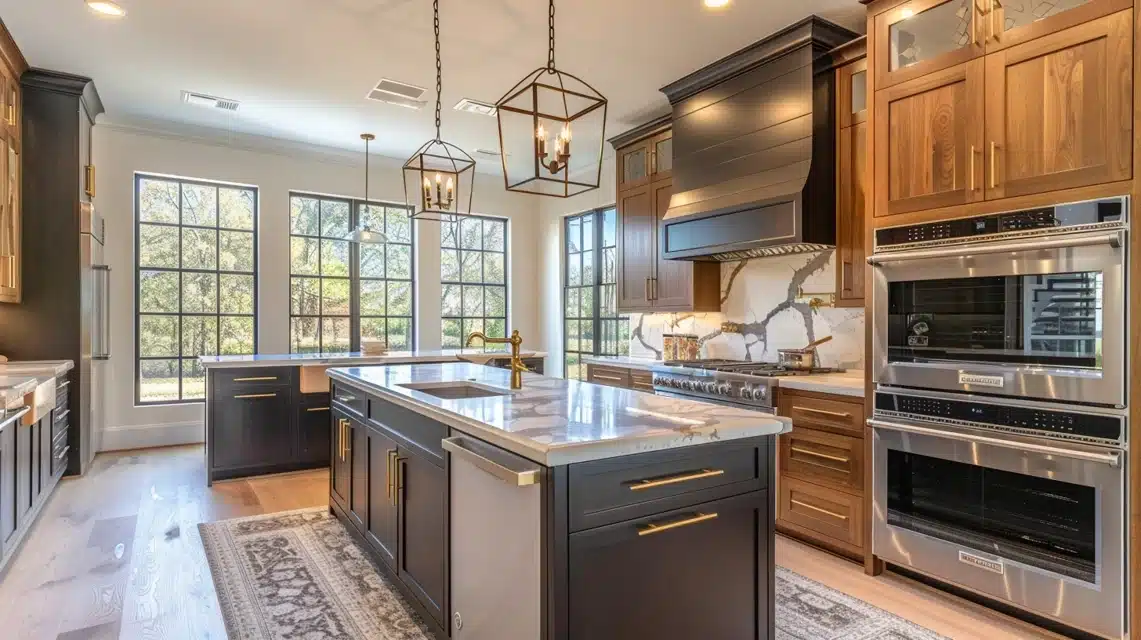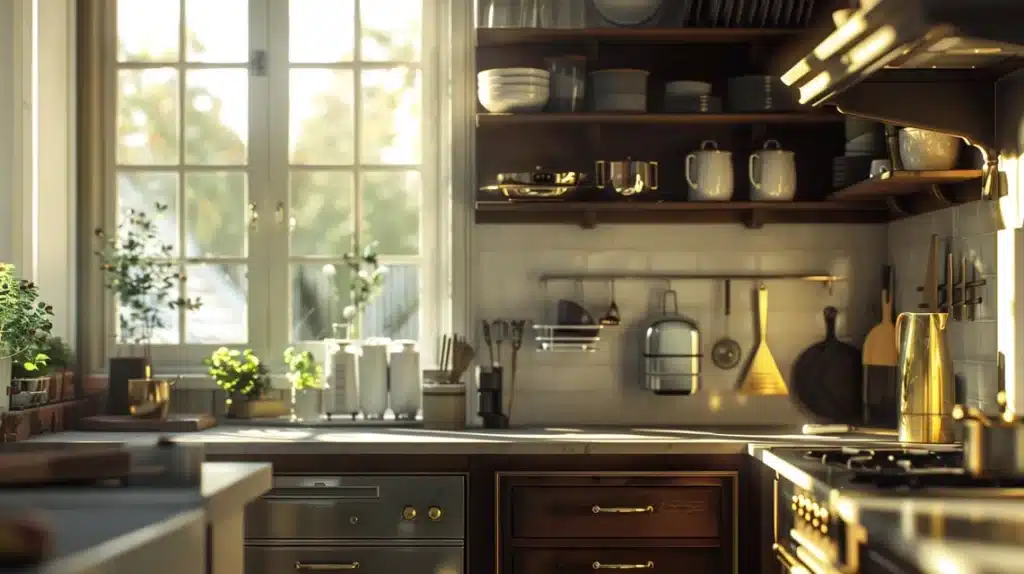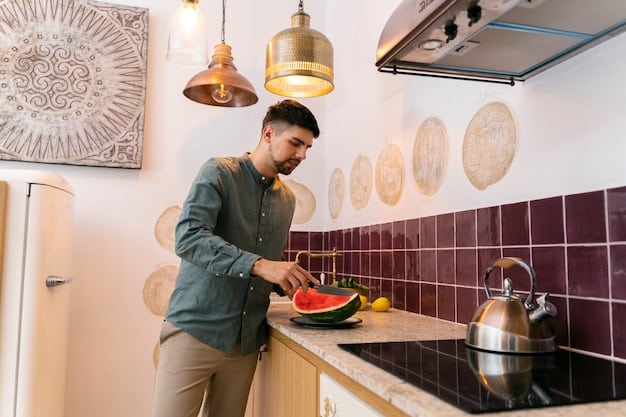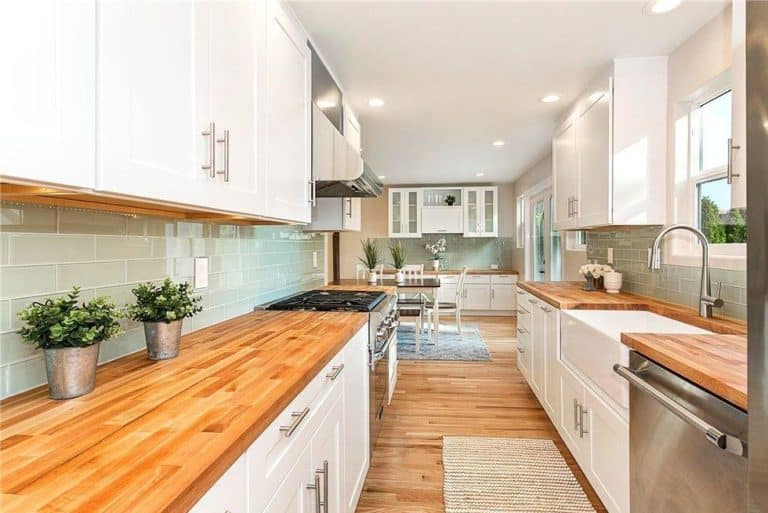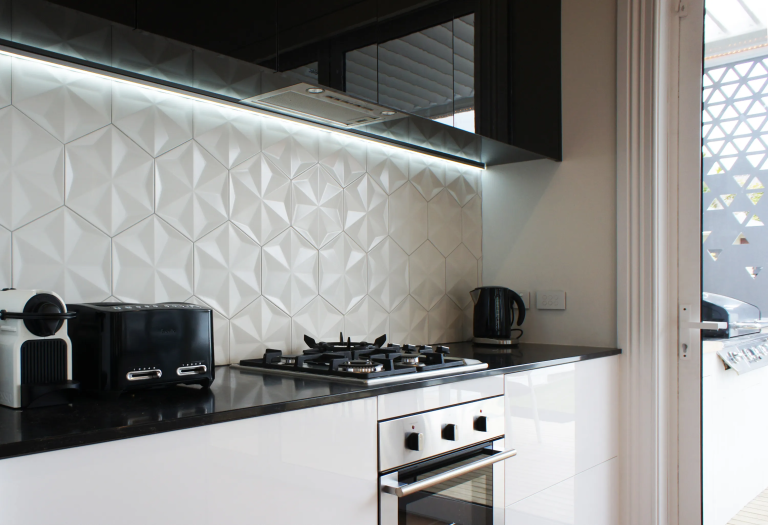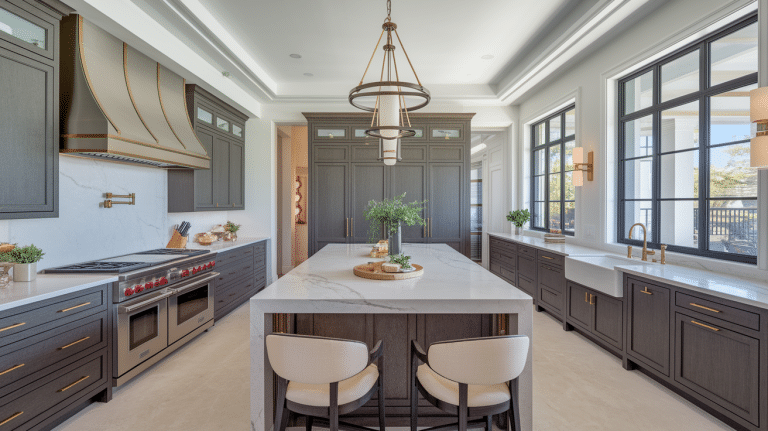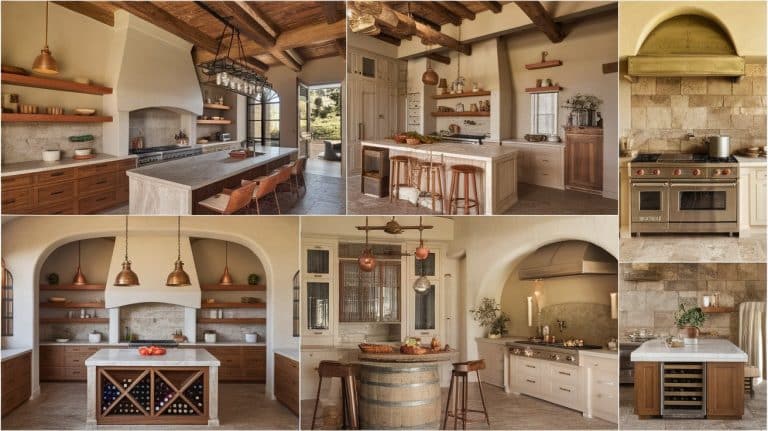Mixing Metals in the Kitchen: Best Combinations and Tips
Hi there! Does mixing metals in the kitchen seem challenging?
As someone who spent months planning my kitchen update, I know firsthand how tricky it can be to select the right metal finishes.
Today’s kitchens shine brightest when they feature a thoughtful mix of metal finishes.
I’m excited to share what I’ve learned about creating a beautiful, balanced kitchen that feels fresh and lasting.
TLDR
1. Limit your kitchen to three metal finishes
2. Choose one main metal for large items (handles, faucets)
3. Add 1-2 accent metals through lights and small items
4. Best combinations:
- Brass + polished nickel
- Brass + black
- Chrome + brass
- Brass + copper
5. Match metals to cabinets:
- White cabinets = any metals
- Dark cabinets = brass/gold tones
- Light gray = chrome/nickel
- Wood = black or brass
6. Count stainless steel appliances as one of your metals
7. Test samples in your space before buying
8. Focus on finishes that suit your daily use
9. Polished finishes show more marks than matte
10. Small decorative items are easiest to swap out if you want changes
Why Mix Metals in Your Kitchen?
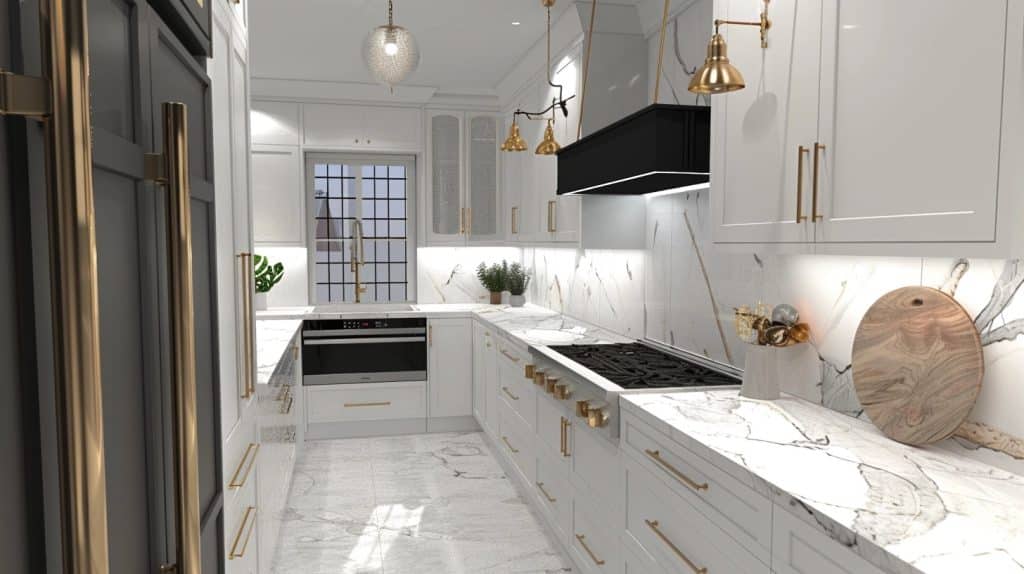
Combining different metal finishes in your kitchen does more than look good – it brings your space to life. Here’s why it works so well.
1. Adds Depth and Visual Interest
- For example, using different textures in throw pillows makes a living room feel complete, and mixing metal finishes creates layers of visual appeal in your kitchen.
- Different metal tones catch the light differently, adding sparkle and warmth throughout the space.
- The interplay between different finishes creates points of interest that draw the eye around the room.
2. Modern and Timeless Appeal
- The current kitchen design welcomes the blend of different metal finishes
- The old rules about matching all metals are gone
- Using multiple finishes helps your kitchen stay fresh and current
- The look works in both modern and classic kitchen styles
3. Reflects Personal Style and Adaptability
- Start with metals you love and add complementary pieces over time
- Change small elements like cabinet handles to update your look without major renovations
- Express creativity through different combinations of finishes
- Create a kitchen that feels collected and personal rather than mass-produced
Core Principles of Mixing Metals
Limit to a Maximum of Three Different Metal Finishes
- Too many metal types can make your kitchen feel cluttered
- A good rule is one main metal and one or two accent metals
- This creates a clean, organized look that’s pleasing to the eye
- The limit helps ensure your kitchen feels planned, not random
Establish Dominant and Secondary Accents for Balance
- Choose one metal as your main finish for larger items like cabinet handles
- Use accent metals in smaller doses through lights or faucets
- For warmer kitchens, make brass or gold your main metal
- For cooler spaces, use nickel or chrome as your primary finish
- Add smaller touches of other metals to create interest
Consider the Size of the Kitchen and Existing Elements
- Look at What’s Already in Your Space, Like Appliances
- Stainless Steel Appliances Count as One of Your Metal Choices
- Larger Kitchens Can Handle More Metal Variety than Small Ones
- Factor in Your Cabinet Color when Selecting Metals
- White Cabinets Work Well with Any Metal Finish
- Dark cabinets often pair well with brass or gold elements
Best Metal Combinations for a Kitchen
1. Brass and Polished Nickel
- A top choice among kitchen designers
- Polished nickel has warm undertones that work beautifully with brass
- The combination suits both classic and current kitchen styles
- Perfect match with stainless steel appliances
- The nickel ties in with appliances while brass adds warmth
- Works especially well with white cabinets and marble counters
2. Brass and Copper
- Less common but highly effective pairing
- Both metals bring warmth but in different ways
- Try brass for main items like cabinet handles
- Add copper in smaller touches like lights or tea kettles
- Creates depth without stark contrast
- Particularly striking with wood elements
3. Brass and Black
- A simple combination that’s hard to get wrong
- Black acts almost like a neutral
- It makes a strong statement without overwhelming
- Easy to update if styles change
- Try black for fixed items like cabinet pulls
- Use brass in lights or decorative pieces
- Works well in both large and small kitchens
4. Chrome and Brass
- Growing in popularity for 2025
- Creates clear visual contrast
- Chrome adds brightness and light reflection
- Brass brings warmth and softness
- It suits both light and dark color schemes
- Keep chrome for practical items like faucets
- Add brass in decorative elements
Remember: Test your chosen combinations by placing samples next to each other before making final decisions. This helps ensure the metals work together in your specific space and lighting.
Practical Design Considerations
Choose Core Items in One Finish
- Start with frequently used items like cabinet pulls and handles
- Select a finish that matches your daily needs
- Polished finishes show more fingerprints than matte ones
- Consider durability for high-touch areas
- Pick quality pieces within your budget for lasting appeal
- These items set the tone for your overall design
Use Complementary Metals for Accents
- Add interest through light fixtures
- Include smaller items like paper towel holders
- Place picture frames in accent metals
- Consider salt and pepper shakers or other kitchen tools
- These smaller pieces are easy to change if you want a new look
- Space out accent pieces for a balanced distribution
Balance Metals with Overall Color Scheme
- White cabinets welcome any metal combination
- Dark blue or green cabinets pair well with gold tones
- Light gray kitchens work with chrome or nickel
- Wood cabinets match nicely with black or brass
- Consider your countertop colors when selecting metals
- Test samples against your cabinet color before deciding
Integrate Existing Elements
- Count stainless steel appliances as one of your metals
- Match nearby door handles if visible from the kitchen
- Consider the finish of your sink
- Look at metal tones in the backsplash or countertops
- Factor in visible hinges on cabinet doors
- Include any fixed items you can’t or won’t change
Summing Up
Remember, there’s no absolute right or wrong way to mix metals. The key is to find combinations that speak to you and work with your space.
If you’re unsure, start small — maybe new cabinet pulls or a light fixture—and build from there.
Trust your instincts, test your choices in your space, and take your time. Your kitchen should tell your story; mixing metals is just one way to make it uniquely yours.
Happy decorating!
Frequently Asked Questions
Can You Mix Chrome and Stainless Steel in A Kitchen?
Yes! They work well together because they share cool tones. For a clean look, chrome faucets or light fixtures pair naturally with stainless appliances.
How Do You Balance Mixed Metals in One Space?
Select one metal as your main finish for about 70% of pieces (like cabinet handles). Use your second metal for 20% and the third for 10% in small accents.
Does Mixing Metals Work in Small Kitchens?
Small kitchens can handle mixed metals – stick to two finishes instead of three. Keep larger items in one metal and add small touches to a second finish.

